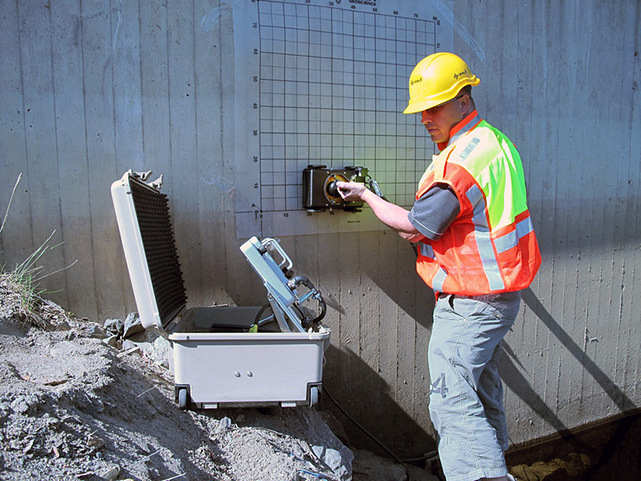Advanced Concrete Scanning Techniques: Guaranteeing Structural Integrity
Advanced Concrete Scanning Techniques: Guaranteeing Structural Integrity
Blog Article
Introduce the Transformative Power of Concrete Scanning in Taking Full Advantage Of Efficiency and Security
Concrete scanning has actually arised as an essential tool in the construction market, using unmatched advantages in boosting task performance and ensuring safety standards. The transformative power of concrete scanning lies in its ability to provide real-time data and comprehensive insights, reinventing exactly how tasks are prepared and implemented.
Value of Concrete Scanning
Making certain the structural integrity and safety and security of building and construction tasks starts with the vital step of conducting thorough concrete scanning. Concrete scanning is a non-destructive approach utilized to detect and map subsurface components within concrete frameworks. This process is essential in recognizing prospective hazards, such as rebar, post-tension cable televisions, and channels, that may be concealed within the concrete. By using sophisticated innovations like ground-penetrating radar (GPR) and electro-magnetic induction, construction teams can accurately situate these aspects without causing any kind of damages to the structure.
In addition, concrete scanning helps in enhancing job timelines and budget plan by avoiding unanticipated costs and delays that might occur due to unforeseen obstructions within the concrete. Inevitably, spending in extensive concrete scanning is an aggressive technique that improves both effectiveness and safety and security in building projects.
Exactly How Concrete Scanning Works
Concrete scanning runs as a vital device in building projects by utilizing innovative technologies to find and map subsurface components without triggering architectural damage. Ground Penetrating Radar (GPR) and Electromagnetic Induction (EMI) are 2 main approaches made use of in concrete scanning. GPR jobs by producing high-frequency radar pulses into the surface, which recover when they run into subsurface items or spaces. The time considered the signal to return suggests the depth and location of the objects. EMI, on the various other hand, utilizes electromagnetic fields to determine differences in product compositions, such as identifying rebar or conduits within concrete structures.
During the scanning process, the information collected is evaluated in real-time, permitting prompt recognition of potential risks or challenges underneath the surface area. By using these advanced innovations, concrete scanning dramatically reduces the danger of costly damages and injuries on building websites.
Benefits of Concrete Scanning
Making use of advanced scanning innovations in building projects supplies a wide variety of advantages, boosting both efficiency and security on-site. One of the main benefits of concrete scanning is the ability to spot and locate embedded things such as rebar, post-tension wires, and avenues properly. By determining these aspects before drilling or reducing into concrete structures, the risk of unintentional strikes is substantially minimized, stopping prospective injuries to workers and damage to the framework itself. Concrete scanning assists in planning and designing extra effectively, as it provides specific details regarding the place and depth of architectural parts.

Study: Concrete Scanning Success

In another case, a construction firm used 3D concrete scanning to evaluate the problem old concrete structures in a historical structure. The detailed scans provided valuable insights into the extent of deterioration and helped prioritize maintenance efforts efficiently. By proactively addressing areas of issue identified with scanning, the firm was able to expand the life expectancy of the structure and guarantee resident safety and security.
These case researches highlight the transformative power of concrete scanning in improving effectiveness, accuracy, and security in building jobs.
Carrying Out Concrete Scanning in Projects
Executing sophisticated scanning innovations throughout building and construction jobs has come to be progressively necessary for boosting accuracy and security. By integrating concrete scanning right into task preparation and execution, building teams can recognize potential hazards, such as rebar or post-tension cords, concealed within concrete structures. This positive technique decreases the threat of crashes, hold-ups, and expensive rework, browse around here eventually causing extra reliable project timelines and budget plans.
To execute concrete scanning efficiently, project supervisors need to team up carefully with seasoned scanning experts to establish one of the most suitable scanning techniques for the particular project requirements. Engaging scanning professionals from the beginning of a project enables the team to produce detailed scanning plans that address vital locations of problem and make certain extensive information collection.
Additionally, including concrete scanning into normal project workflows can streamline decision-making procedures, as real-time check data provides prompt understandings into the condition of concrete structures - Concrete Scanning. This data-driven method facilitates informed analytic and enables groups to make modifications quickly, fostering a society of efficiency and safety and security throughout the project lifecycle

Verdict
To conclude, concrete scanning plays a vital function in enhancing performance and security in construction tasks. By making use of innovative modern technology to map and spot out underlying structures within concrete, this process aids to stop pricey blunders, make sure structural integrity, and decrease risks on look at more info website. With the capability to discover surprise aspects and provide exact information, concrete scanning verifies to be an important tool for maximizing job outcomes and making the most of general success.
Concrete scanning is a non-destructive technique made use of to identify and map subsurface elements within concrete structures. Additionally, concrete scanning helps in enhancing job timelines and spending plan by staying clear of unexpected expenses and hold-ups that might emerge due to unexpected obstructions within the concrete. One significant instance research entails a large renovation job where concrete scanning played a crucial role in ensuring project success.In another case, a construction firm made use of 3D concrete scanning to blog assess the problem of maturing concrete frameworks in a historical structure. By incorporating concrete scanning into job planning and implementation, building and construction teams can determine possible hazards, such as rebar or post-tension cables, hidden within concrete frameworks.
Report this page